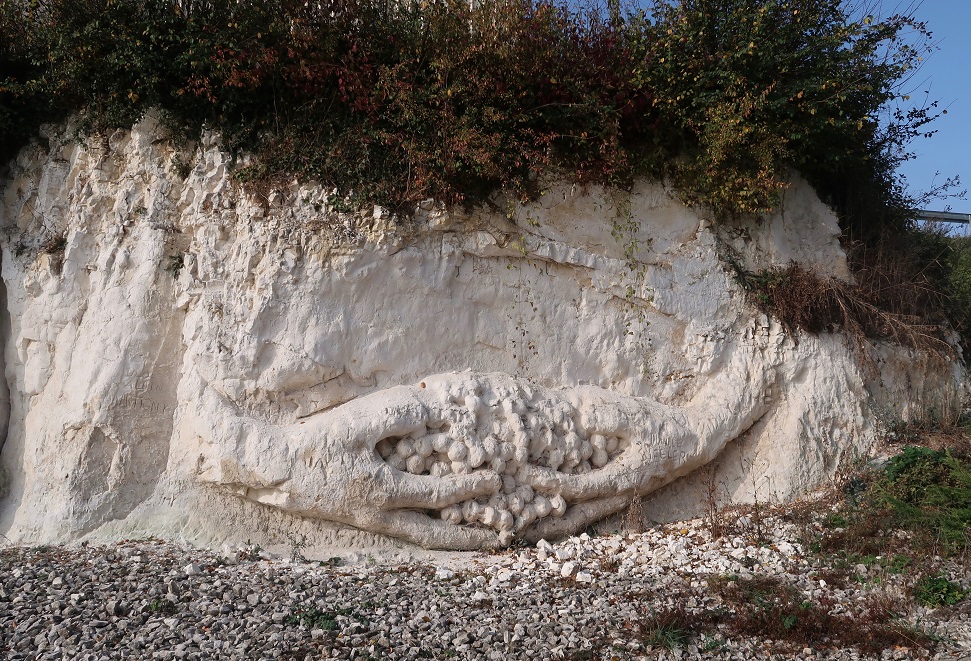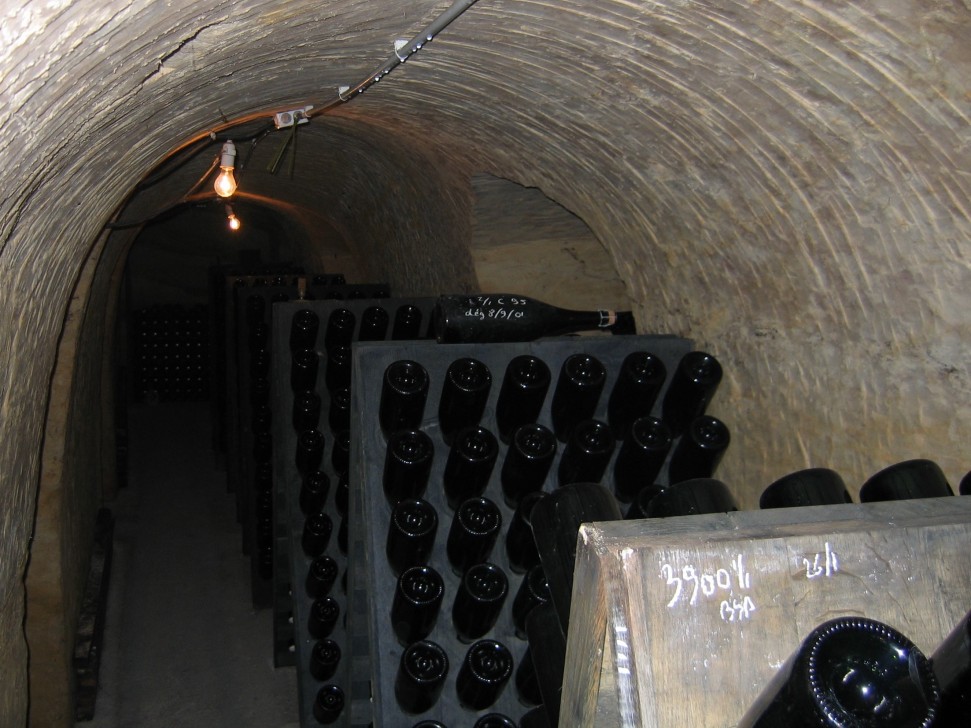Champagne Lilbert-Fils, Côte des Blancs

| Country & Region | France, Champagne, Cramant |
| Appellation(s) | Champagne |
| Producer | George & Bertrand Lilbert |
| Founded | 1746. Bertrand took the helm from his father George in 2005. |
| Website | www.champagne-lilbert.com |
The style here is chiseled and intensely flavored, invariably rewarding bottle age, and Lilbert enjoys a discreet celebrity among savvy collectors.
—William Kelley, The Wine Advocate, December 2023
The only problem with these wines is finding them, as the tiny production is eagerly snapped up upon release by a near-cult following of clientele around the world.
—Peter Liem, Champagne Guide 2014
The written record has the Lilbert family cultivating vines around its hilltop village of Cramant in 1746, and it’s probably a fair bet that they were there sometime before that (the oldest part of their 23-foot-deep cellar dates from 1712). The record further shows that as early as 1907 the family bottled its own wine for commercial sale. Despite such longevity, the house of Lilbert is tiny: it farms a mere 3.5 hectares of vines (which translates into 8.6 acres).

Bertrand Lilbert and his father Georges–who’s in his eighties but still helping his kid out–make only grand cru blanc de blancs from 100% Chardonnay. Their annual production averages 2,300 twelve-pack cases. To put this in perspective, the house of Moët & Chandon pumps out 25 million cases each year. Unlike Moët, the Lilberts make all of their wine from their own vineyards, which break down into 15 parcels in the grand cru villages of Oiry (10% of their total plantation), Chouilly (30%), and Cramant (60%) on the Côte des Blancs. Recent replantings have brought the average vine age down to 30 years.
Note that Cramant should not be confused with crémant. Crémant once used to be a term reserved for a style of Champagne with less pressure–and indeed the village of Cramant has a tradition of making wine in such a style, so much so that Lilbert’s Perle was once labeled as Crémant de Cramant. But those days are gone and now crémant legally refers to all méthode Champenoise wine made within France but outside of the Champagne appellation.

The Côte des Blancs is a ridge that begins just outside of Epernay and runs north-south. Vineyards grow primarily on its east-facing escarpment, making the resemblance to Burgundy’s Côte d’Or a rich parallel (although here the soil is tuffeau and chalk rather than marl and limestone, and the ridgeline is much shorter). Bertrand Lilbert began working with his father in the 1990s and made one change. The flanks of Cramant have long been known as one of the truly great terroirs of the Côte des Blancs, known for full-bodied, chalk-rich Chardonnay. The very name Cramant refers to Mont de Craie, or mount of chalk, so why not, Bertrand thought, honor this legacy? Moreover, Cramant and its neighboring village of Avize, immediately to the south, are the historic heart of the Côtes des Blancs. Thus he made the 1995 vintage Champagne from 100% Cramant fruit, saving the fruit from the other village parcels for the two non-vintage wines. The result was superb, and he has made the practice standard for his vintage wine.

The farming culture here is lutte raisonnée, i.e., sustainable. All of the wines are made in steel vats and all undergo malolactic fermentation. The bottles are riddled by hand (Bertrand turns 4,000 each morning; takes him 30 minutes!) in a deep, hand-dug tuffeau cellar, and the wine is disgorged without freezing. The house style emphasizes fine mousse and fragrant aromas of lime, yellow orchard fruits, and hay. These are beautiful expressions of intensely mineral, chalky Chardonnay, with gorgeously rich Cramant fruit wrapped in elegance and nuance. As Peter Liem observes in his book Champagne, Lilbert’s vintage wine is “an expressive, age-worthy champagne, and one of the best examples of pure Cramant being made today.”

Thanks to Jeff Bramwell for the shot of Bertrand Lilbert and for the bottle shot (Bertrand’s daughter Lilou was born in 2010, thus this vintage bottling has a pink plaque–a color she chose; the 2012, birth year of son Pavel, has his color choice of blue).
The Wines
| Wine | Blend | Description |
|---|---|---|
| Grand Cru Blanc de Blancs NV | Chardonnay | This comes from all three communes where Lilbert farms vines. Typically it is made with three consecutive vintages and is aged on its lees for a minimum of three years beginning in April following the harvest. It's also made entirely from the first pressing; Bertrand's second press juice for all three cuvées is sold to Moët. With the warmer years, Bertrand began to lower his dosages from the usual 6-7 grams to less than 5 grams, beginning with the NV based on 2014. The NV based on 2015 received 4 grams; the NV based on 2016 received 3 grams. The style isn't changing so much as the weather is warming. The non-vintage represents 60% of his production, and the yearly average is 18,000 bottles plus 2,000 half bottles. |
| Perle NV | Chardonnay | This, the house’s rarest and most sought-after wine, also comes from all three communes, but is sourced from old vines. Its dosage is now in the 3-4 grams per liter range, and it is bottled with a lower pressure than the non-vintage classic— 4 bars of pressure rather than the normal 6—making it particularly transparent, and almost smoky in its intense chalkiness. Beginning in 2013, Bertrand began to radically extend the élevage of Perle from eight months in tank to two to three years, and consequently shorten the time on the lees in bottle from four years to 18-30 months (first disgorgement is at 18 months, the last is at 30 months, and there can be as many as six disgorgements). The vinosity in the final wine remained the same, while the change in method allowed him a (relatively) quick transition from an average production of 2,500 bottles annually to an average of 5,000 bottles. |
| Vintage Grand Cru Blanc de Blancs | Chardonnay | Since 1995 this has been made entirely from grapes raised in the hamlet of Cramant. The primary source is a parcel on the lower northeast side of the village named Les Buissons, where the Lilbert vines--all nine rows of them--were planted in 1936. The second source is a higher east-facing parcel in Les Moyens on the other side of Cramant, specifically the northwest side and beginning at the village's edge. Les Moyens straddles a ridge and half faces east, half west, both of which are oddities on this side of Cramant where most vines face either north or south across the road that crosses the Cramant pass and dips down into a valley en route to Cuis. Les Buissons gives powerfully rich fruit that is lifted nicely by the taut fruit of Les Moyens, which makes up around a quarter of the blend. Like the Perle, this is now bottled with a dosage of 3-4g/l and is only made in good years. Production averages 4,000 bottles plus 1,000 magnums." |